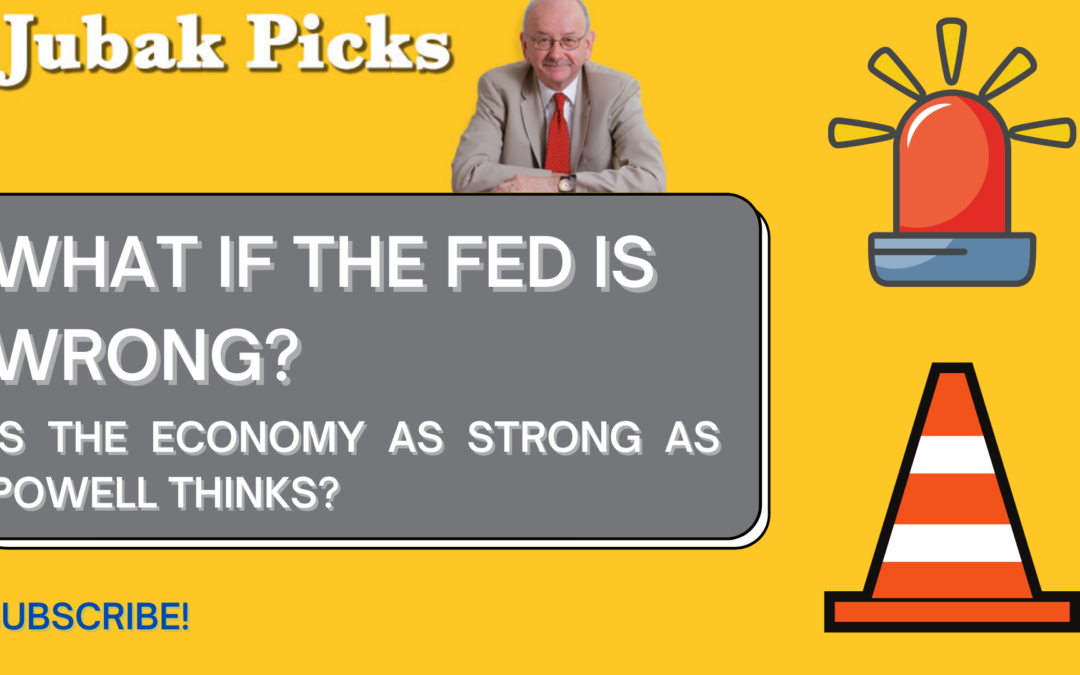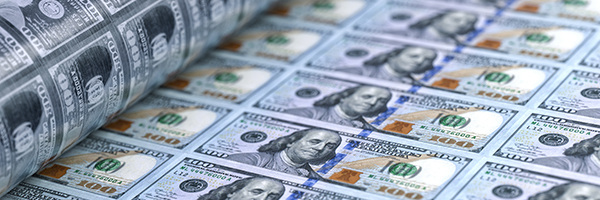
Please watch my New YouTube Video: What if the Fed is Wrong?
I’m starting up my videos on JubakAM.com again–this time using YouTube as a platform. My ninety-third YouTube video “What if the Fed is wrong?” went up today.

I’m starting up my videos on JubakAM.com again–this time using YouTube as a platform. My ninety-third YouTube video “What if the Fed is wrong?” went up today.

In his post meeting press conference Federal Reserve Chair Jerome Powell said the central bank was ready to raise interest rates in March and didn’t rule out moving interest rates higher at every meeting in order to to tackle inflation. Stocks didn’t appreciate the extra information.

Today, January 26, in its post Open Market Committee press release the Federal Reserve said it would “soon” be appropriate to raise interest rates, as inflation runs above policymakers’ preferred target and the job market strengthens. The Fed left interest rates unchanged with the benchmark at 0% to 0.25%. The Fed also left its schedule in place to end its bond buying program in March. And promised to shrink its balance sheet holdings (most probably by not replacing bonds in its portfolio when they mature) “in a predictable manner.”

At the moment, Wall Street is memorized by tomorrow’s meeting of the Federal Reserve’s interest-rate setting body, the Open Market Committee. The meeting is almost certain to result in no action on interest rates or Treasury purchases or balance sheet draw downs. The Fed likes to announce policy actions at meetings replete with economic updates (the Dot Plot) and press setups. Those are missing at this meeting and present for the March 16 meeting. That’s the date when we’re likely to see the Fed actually do something. So what happens when the Fed does nothing and says nothing?

When the Federal Reserve talks everybody listens. Although it’s extremely unlikely that the Fed will say anything of market-moving import after the Wednesday, January 26, meeting of its Open Market Committee. And it’s even less likely that the Fed will do anything. For any action and any meaningful commentary investor and traders will have to wait for the Fed’s March 16 meeting.


The yield on the 10-year Treasury popped to 1.87%, a jump to 9 basis points on the day (and now 47 basis points in a month. It takes 100 basis points to make one percentage point.) Speculation is running rampant, and the herd is running with it, that the Federal Reserve will raise interest rates by more than 25 basis points at its March 16 meeting. Can you say “50 basis point rate increase”?

I’m starting up my videos on JubakAM.com again–this time using YouTube as a platform. My eighty-seventh YouTube video “3 Sectors to Avoid After the Fed Tightens” went up today.

The big news out of Federal Reserve Chair Jerome Powell’s told Congress appearance before the Senate today (President Joe Biden has nominated him for another term as head of the Fed) was that if inflation doesn’t come down, the Fed would more aggressively raise interest rates.“If we see inflation persisting at high levels, longer than expected, if we have to raise interest rates more over time, then we will,” Powell said in a Senate Banking Committee hearing. Yep, the Fed will fight inflation. “Dog bites man.” Film at 11.

Non-farm payrolls grew by 199,000 in December (and a revised 249,000 in November) the Bureau of Labor Statistics announced this morning. Economists surveyed by Bloomberg had expected the U.S. economy to add 450,000 jobs in the month. The official unemployment rate fell to 3.9% from 4.2% in November and an expected 4.1%.

The yield on the 10-year Treasury is up 11 basis points as of 1:30 p.m. New York time today, Monday, January 3, to 1.62%. That’s the first time the yield has been above 1.60% since the emergence of the Omicron Variant in November.

Everyone on Wall Street who manages more than a dime will be watching Friday’s release of the jobs report for December. Any hint of how the Delta and Omicron Variants have/will affect the economy will be gobbled up and turned into strategies for the next 10 to 12 weeks (until spring, that is.) Economists surveyed by Bloomberg expect that the economy added 400,000 jobs in December